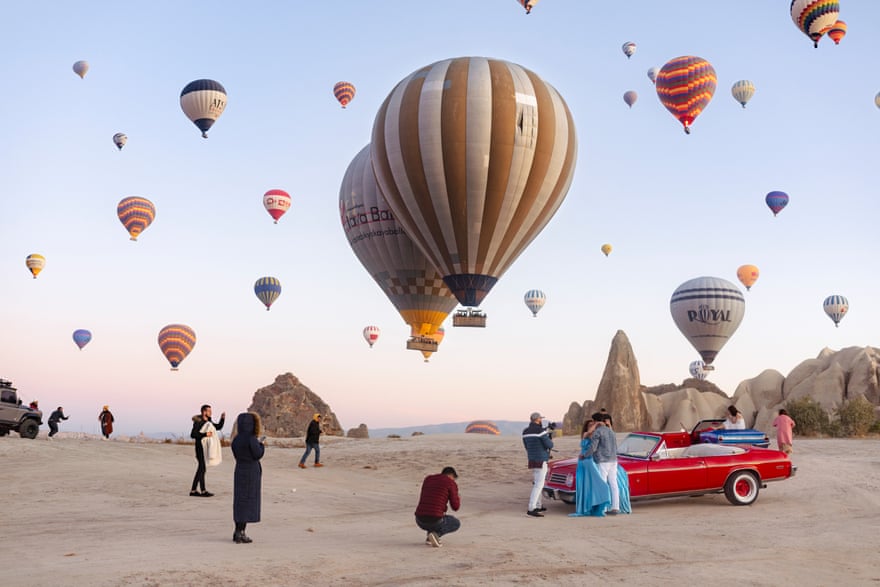
Natacha de Mahieu arrived at the edge of Obersee, a remote lake surrounded by lush green mountains and dramatic waterfalls in a south-east corner of Germany, in August 2021. It was chilly; rain pelted down. “It was not so fun to be there. It was so cold and everything was wet,” De Mahieu, 26, says from her home in Brussels, laughing.
Tourists came and took portraits of themselves against the view. De Mahieu noticed that, as soon as someone stepped in front of the camera, they would shed their layers in defiance of the cold to convey the image of a blissful summer. In front of the camera: T-shirts, floaty dresses. Behind it: swathes of padded jackets. It was Instagram versus reality.
De Mahieu’s photo series, which she calls Theatre of Authenticity, explores the link between tourism and spectacle, and how we perform when we travel, particularly when we think no one is watching. The photos make up the graduation project for her masters degree in documentary photography, and bring together the three issues that most preoccupy her: tourism, social media and climate change.
“I love to travel,” De Mahieu says, recalling a trip to Bolivia when she was 18 as the moment she became interested in photography. “I’m also very curious about why we love travelling, and our motivations.” And, she adds: “I spend too much time on social media.” Scrolling through Instagram, De Mahieu started to have “the feeling that everyone is going to the same places, using the same photographic compositions, the same colours”. It sparked a very generation Z artist’s dilemma. Surrounded by endless digital content, she began to wonder if she would ever make something truly unique.
And so De Mahieu took that concern about uniqueness, and gave it a twist. She would take precisely the sort of photo that tens of thousands had already taken. But rather than do what many a camera-wielding tourist has done when faced with a crowded destination – block out the other people in view and deliver an image that suggests it is them alone surrounded by natural splendour – she would add more people.
She began by identifying some of the most geotagged European tourist destinations on Instagram, including the lake at Obersee, Turkey’s romantic Cappadocia region (famous for its hot-air balloons), Spain’s Bardenas Reales desert, and the rocky calanques (coves) in Marseille. Travelling to these destinations in her campervan across the summer, she would usually spend two days in each place. The first day was set aside for scoping out the area and finding the best angle to shoot from. The next day, she would set up her camera on a tripod and take photos at intervals for an hour, documenting tourists coming and going. When editing, she would use Photoshop to produce a time-lapse collage that showed all the people who had visited the area over 60 minutes. One finished image can take up to a week to perfect.
There is a version of this project that would take on some of the most popular landmarks around the world: walkers atop the Great Wall of China; hundreds pretending to prop up the Leaning Tower of Pisa. But De Mahieu deliberately chose off-the-beaten-track destinations. “I wanted to show the impact of that kind of ‘invisible tourism’ on these places. When I say invisible, I mean that when you’re there you have a feeling that you are alone. But over an hour, or an afternoon, there are a lot of people going there.”
It is a commentary on how social media is able to quickly transform somewhere into a must-see destination – an Instagram post by an influencer can open the floodgates – and also how this fame can have harmful environmental effects (in June this year, Marseille’s Calanques national park capped visitor numbers for the first time to protect the rock formations). “Climate change is very real and very obvious,” De Mahieu says; it was “quite natural” that her work would respond to those concerns.
She does not see herself as exempt from the culture depicted in her photos. De Mahieu loves to travel, and admits that she spends too much time on social media; even in her own photography, she feels the pervasive influence of the Instagram aesthetic (soft pastel colours, a tidy composition that suits the default square shape – “I’m like: no! I don’t want it!”). Her photographs, rather than standing in judgment, are a playful invitation to think: about what we are searching for when we leave home; how our everyday decisions are influenced by the allure of a beautiful image, and why, in a culture that prizes individuality, we all seem to crave that shot of ourselves standing in front of a little wooden house on the lake in our summer best, surrounded by the mountains and trees and open waters – and absolutely nobody else.
Cappadocia, Turkey, November 2019
Tagged 2.2m times on Instagram (based on images tagged to location at time of publication)
“Every day at sunrise, hot-air balloons filled with tourists fly over the mountain ridges of the Cappadocia region in central Turkey,” says Natacha de Mahieu. “Here, travellers take selfies, while a couple stages a proposal on a vintage car in front of a professional photographer. In this series, I wanted to play with the line between reality and fiction: are these photos ‘real’ or ‘faked’?”
The Calanques of Marseille, France, May 2021
Tagged 132,000 times
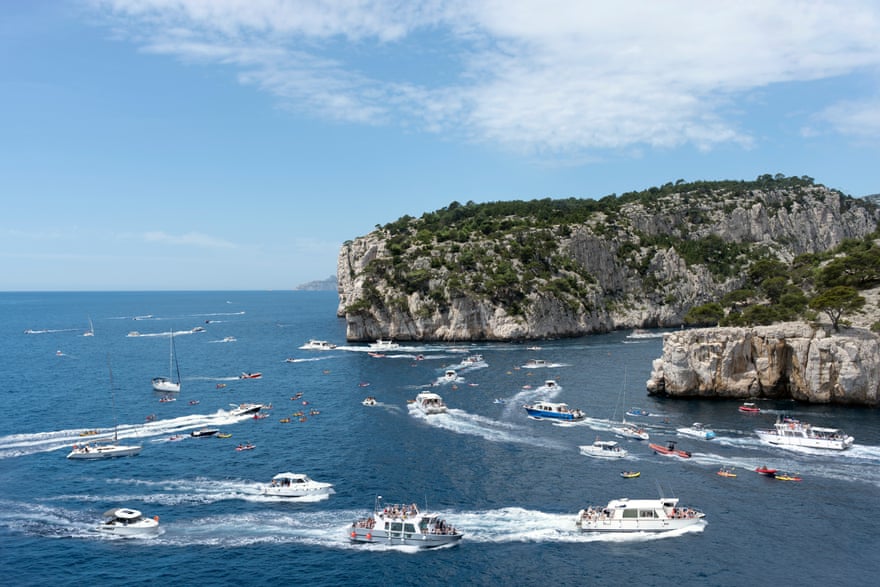
“The rocky limestone cliffs and emerald creeks of the Calanques in the south of France attract more than 3 million visitors every year. As the region is difficult to reach on foot, specially authorised boat tours operate for tourists, criss-crossing each other’s wakes.”
Lac Blanc, Chamonix, France, August 2021
Tagged 44,200 times
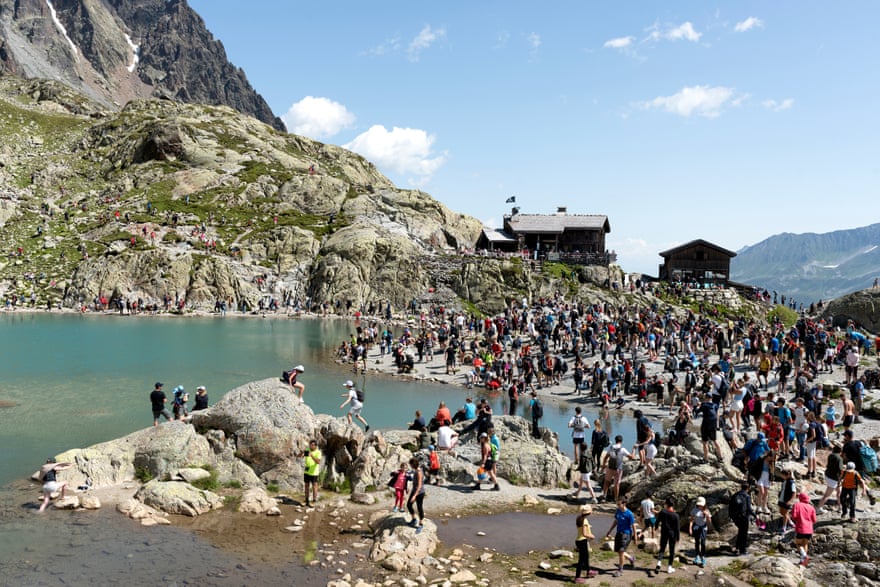
“Lac Blanc can be reached by a two-hour ascent of 500 metres after a cable-car ride to 1,877 metres, and offers stunning views of Mont Blanc, the highest mountain in the Alps, on the eastern edge of France. This collage ismade of photos taken over one hour.”
Bardenas Reales desert, Spain, June 2021
Tagged 96,200 times
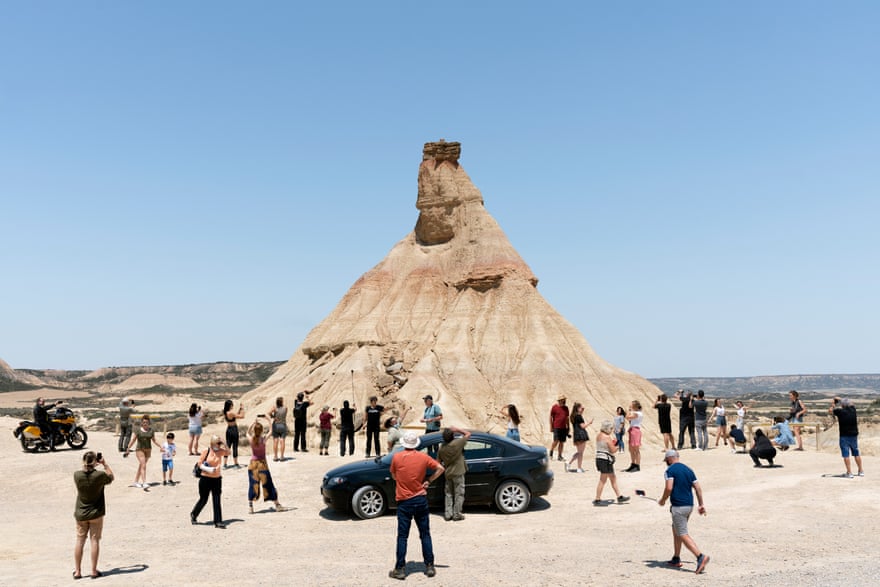
“Bardenas Reales is a semi-desert landscape in the north of Spain. The Castildetierra rock formation pictured here features in many an Instagram portrait. I included myself in this photo because the series is also a way for me to reflect on my own practices as a tourist and a photographer.”
Gorges du Verdon, France, July 2021
Tagged 216,000 times
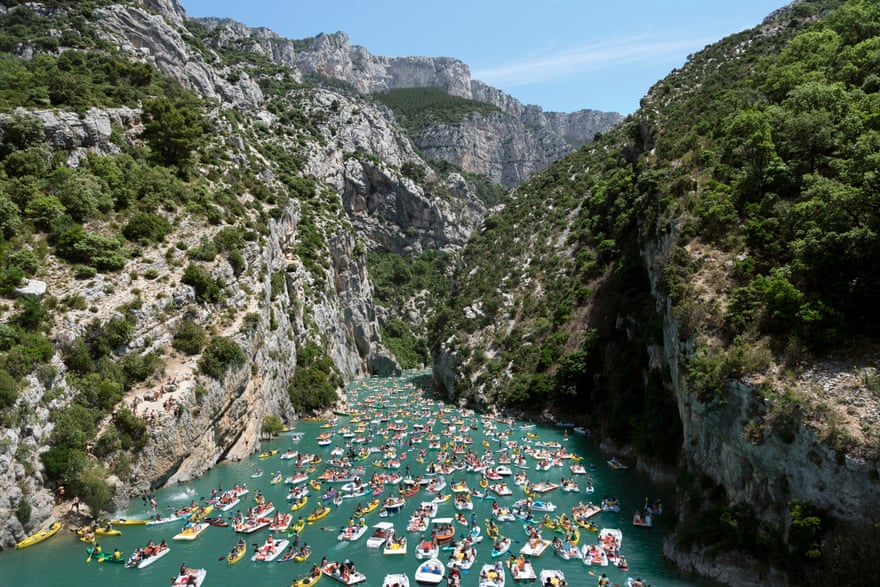
“The Gorges du Verdon, in south-east France, is the largest river canyon in Europe and has become increasingly popular. I took this photo from a long distance and high up to refer to landscape paintings of the Romantic period. ”
Obersee, Germany, August 2021
Tagged 43,500 times
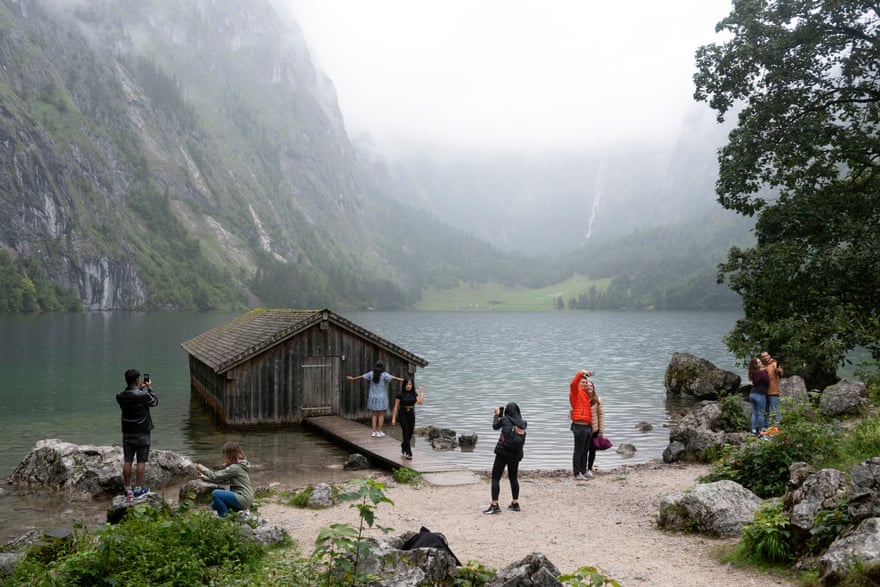
“The fisherman’s shack that sits on the edge of a lake used to be completely unremarkable. Then came Instagram. This collage reflects the competition that occurs when we each try to find the best spot for a selfie.”
Peneda-Gerês national park, Portugal, June 2021
Tagged 83,800 times
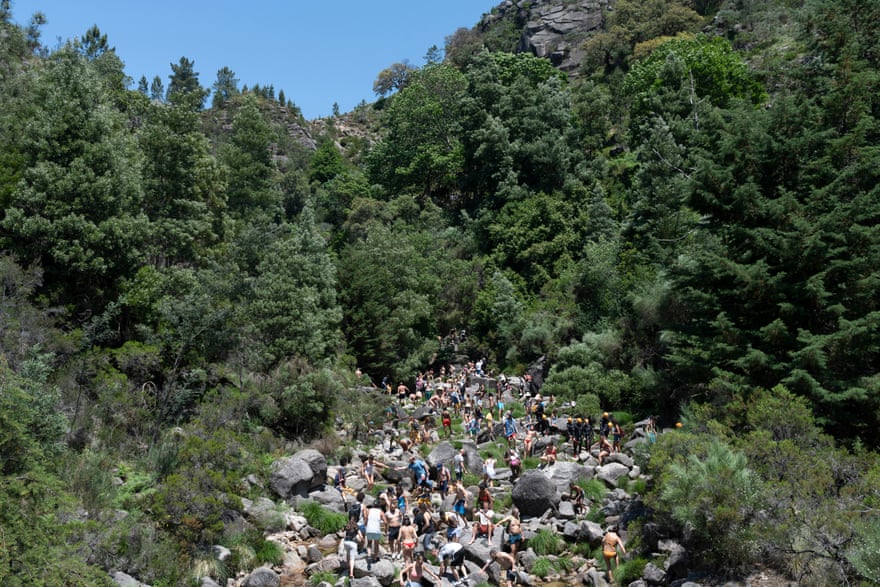
“This image, inside Portugal’s only national park, was taken remotely using a wireless connection between my camera and my phone. I found that, if I stayed close to my camera, tourists would politely step out of the frame. The only way I could compose this image was to leave my camera on a tripod, walk away, and press the shutter from afar.”
Pont d’Arc, Ardèche gorges, France, July 2021
Tagged 126,400 times
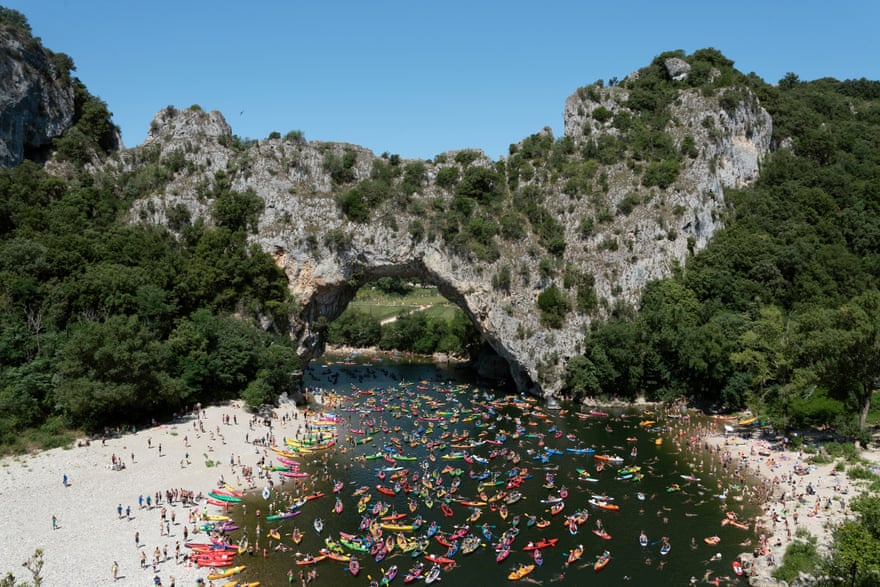
“This collaged image of the Pont d’Arc, a large natural bridge in Ardèche, south-east France, was made from photographs taken over a period of 80 minutes at the height of the tourist season. The final result, made from 100 images, took more than a week to complete.”



